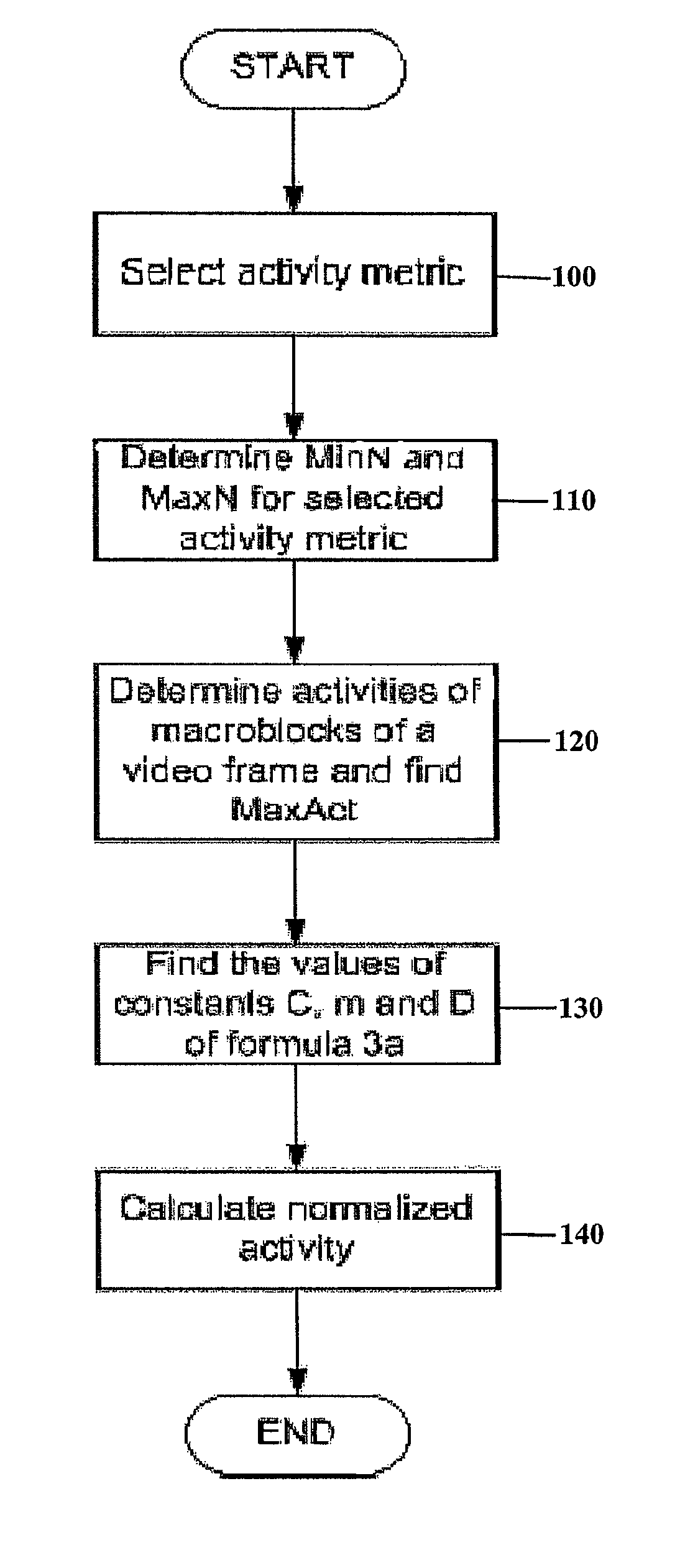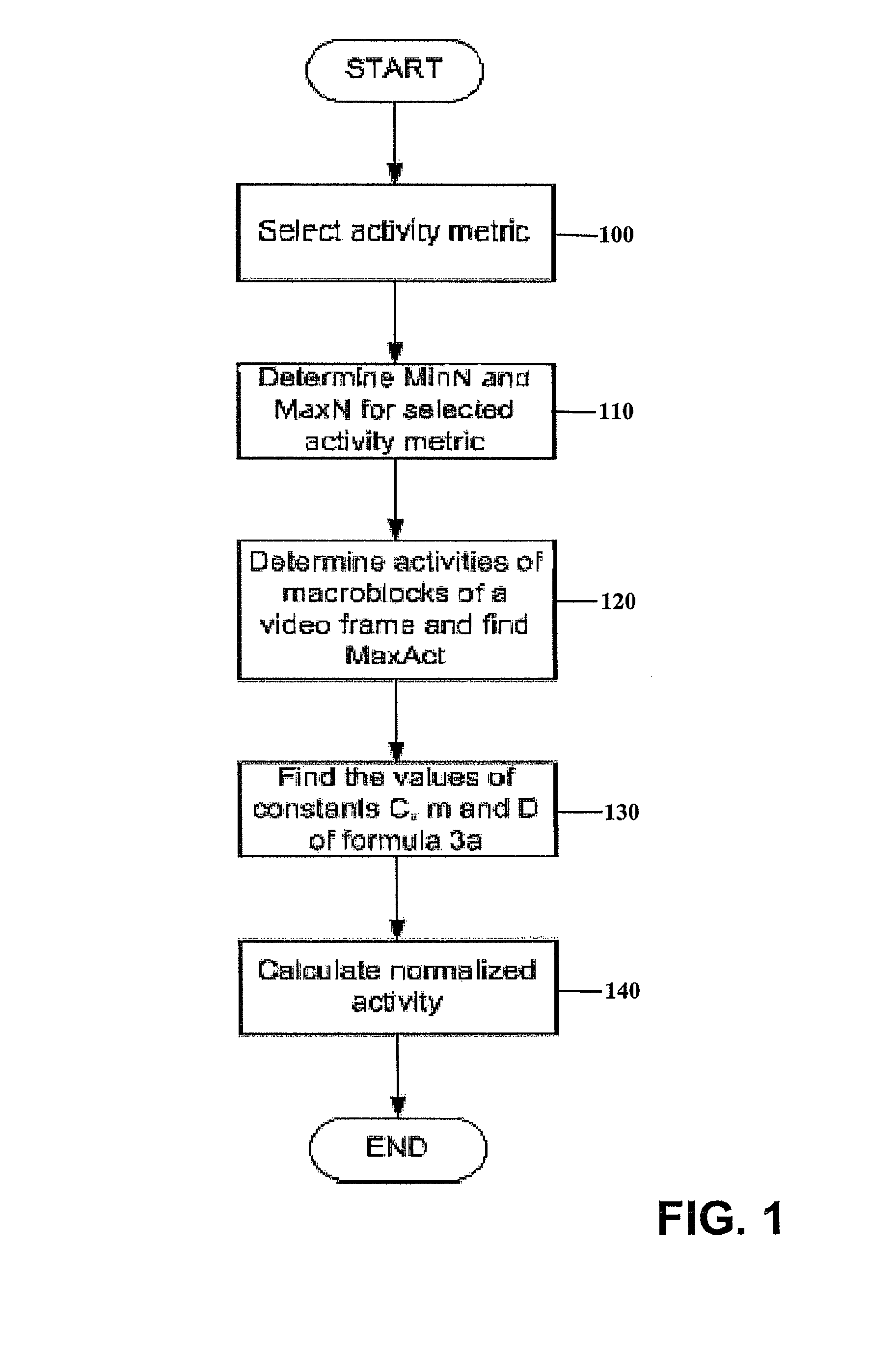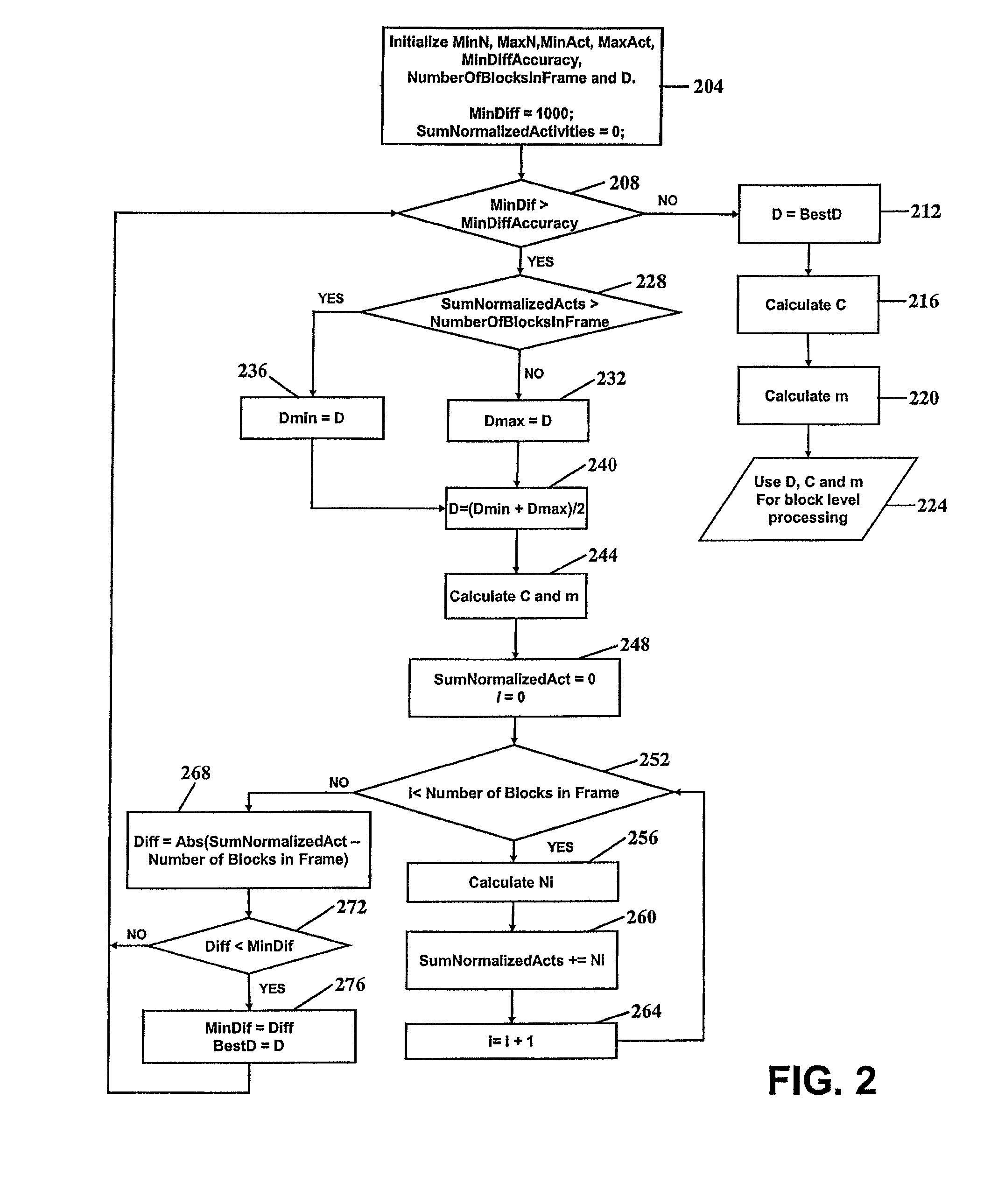Activity normalization for video encoding
a video and activity normalization technology, applied in the field of video data encoding, can solve the problems of reducing the sensitivity of the hvs to distortion, increasing the human sensitivity to contrast and distortion, and affecting the quality of video, so as to facilitate the optimal selection of an activity metric, facilitate the adaptation of any activity metric, and facilitate the effect of improving the uniformity of video quality
- Summary
- Abstract
- Description
- Claims
- Application Information
AI Technical Summary
Benefits of technology
Problems solved by technology
Method used
Image
Examples
Embodiment Construction
[0019]According to Test Model 5 (the rate control scheme described in ISO / IEC (MPEG2) “Test Model 5 (TM5), April 1993”), the quantization step size mquant of a block within a video frame is calculated according to equation:
mquanti=Qi*Ni (1)
where Qi is the base quantization value for block i, and Ni is the normalized activity (or complexity), of block i, which modulates the base quantization value.
[0020]The base quantization value is calculated according to the status of the compressed bits buffer and changes slowly, depending on a reaction factor which can be chosen large enough so that the base quantization value Q does not change for a frame comprising numerous blocks. In this case, equation (1) can be written in the form:
mquanti=Q*Ni (2)
where Q is the base quantization value attributed to the frame to which block i belongs.
[0021]The TM5 equation for calculating a normalized activity for block i is described below:
[0022]Ni=2*acti+AvgActacti+2*AvgAct(3)
where acti designates the a...
PUM
 Login to View More
Login to View More Abstract
Description
Claims
Application Information
 Login to View More
Login to View More - R&D
- Intellectual Property
- Life Sciences
- Materials
- Tech Scout
- Unparalleled Data Quality
- Higher Quality Content
- 60% Fewer Hallucinations
Browse by: Latest US Patents, China's latest patents, Technical Efficacy Thesaurus, Application Domain, Technology Topic, Popular Technical Reports.
© 2025 PatSnap. All rights reserved.Legal|Privacy policy|Modern Slavery Act Transparency Statement|Sitemap|About US| Contact US: help@patsnap.com



